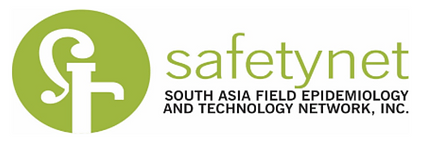Determining the Prevalence and Behavioral Factors of HIV and STI in the Philippines through the conduct of the Integrated HIV Behavioral and Serologic Surveillance (IHBSS)
The IHBSS is a study primarily conducted by the Epidemiology Bureau that aims to determine the prevalence of HIV-AIDS and STD in the country, and to better understand behavioral factors that lead to such prevalence. The 2018 IHBSS is the seventh round of the surveillance, whose implementation has been granted to the non-government organization, the Field Epidemiology Training Program Alumni Foundation, Inc. (FETPAFI).
FETPAFIis tasked to handle the administrative and field operation aspects of the project, in partnership with the Epidemiology Bureau, the STI/AIDS Cooperative Central Laboratory (SACCL), and the Philippine National AIDS Council (PNAC) of the Department of Health (DOH). The project fund is managed by the Philippine Council for Health Research and Development of the Department of Science and Technology (PCHRD-DOST) under the Advancing Health through Evidence-Assisted Decisions with Health Policy and Systems Research (AHEAD-HPSR) program.
The 2018 IHBSS (Year 1) was conducted between April 2018 to April 2019, across 13 sentinel sites, including the cities of Angeles, Baguio, Cagayan De Oro, Cebu, Davao, General Santos, Iloilo, Mandaue, Pasay, Quezon, Taguig, Talisay (Cebu) and Zamboanga covering both males who have sex with males (MSM) and transgender women (TGW) using time location sampling (TLS). The IHBSS among female sex workers (FSW) was done within the 10 of the 13 sentinel sites (excluding Taguig City, Mandaue City and Talisay City) using systematic sampling.
The 2018 IHBSS (Year 2), April 2019 – June 2021 focused on the analysis and interpretation of the 7th IHBSS round and conduct of Formative Assessments among key population. The activities comprised of dissemination activities (i.e. CAPE, Community Engagement, Data Dissemination and Utilization), AIDS Epidemic Modeling (AEM) workshops and consultative meetings, exploratory study on the risks and barriers to service uptake among WLHIV and online survey among males and transgender women who have sex with males.
The 2018 IHBSS also considered the need to measure emerging risk behaviors among key population groups (i.e. chemsex), changes in social and sexual networks (i.e. online/social media networks), and innovations in HIV strategies for prevention and testing (i.e. condom access points, community-based HIV screening [CBS], etc.).
The next round of the IHBSS will be in 2022.
For more details about the methodology, results, key findings and recommendation of the 2018 IHBSS, please refer the technical report found in the Resources/ Reports tab.
Read More

























